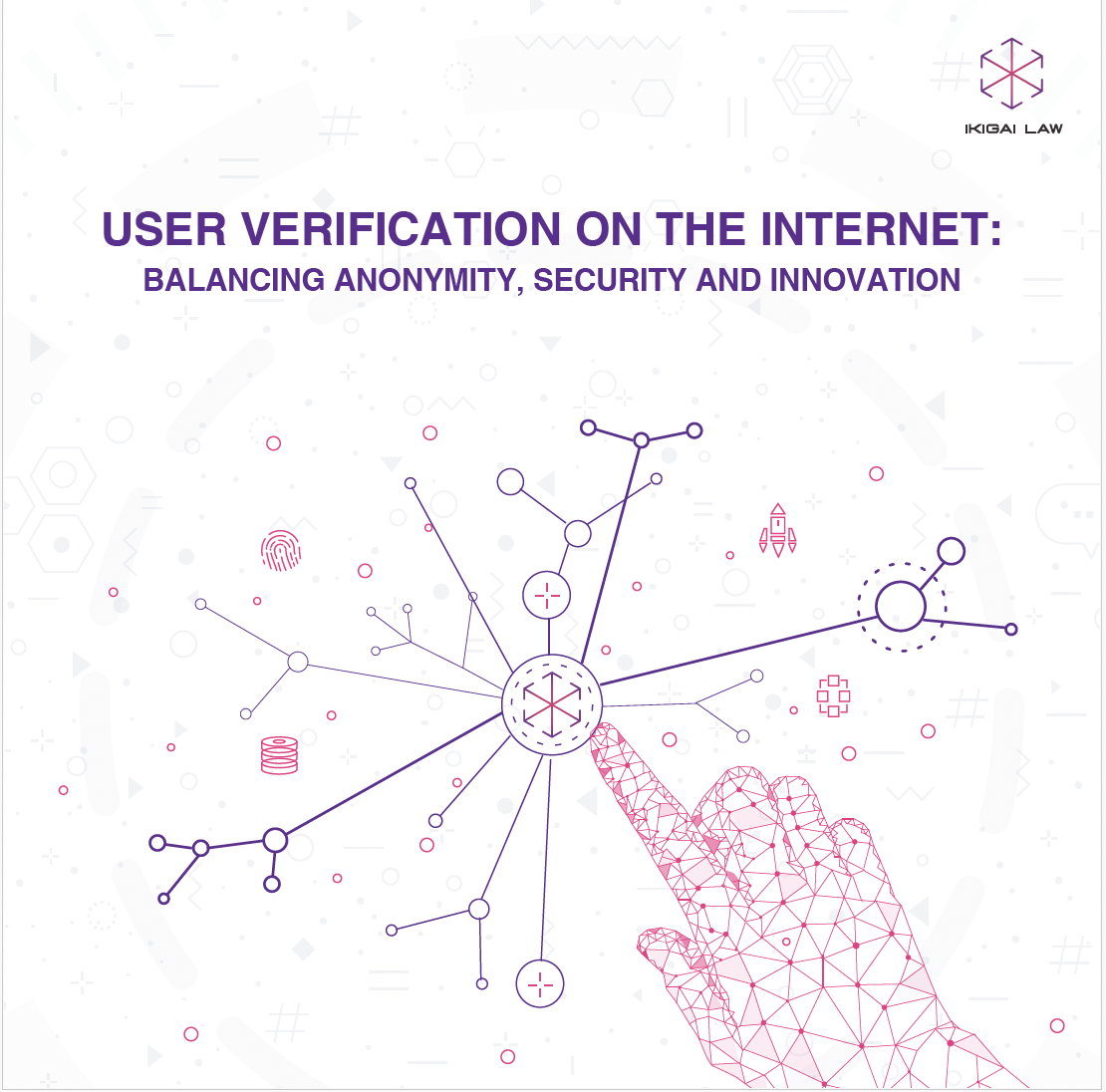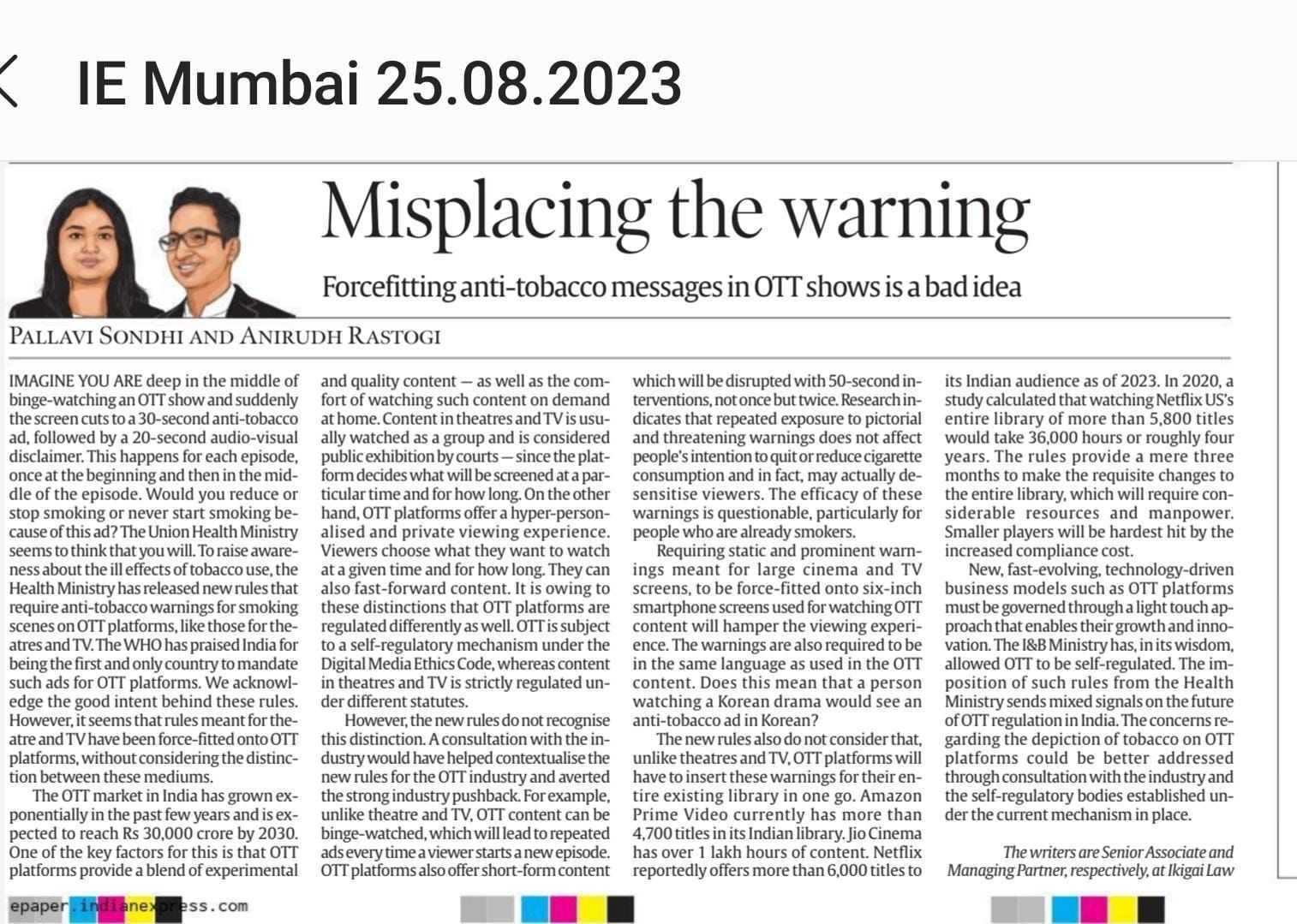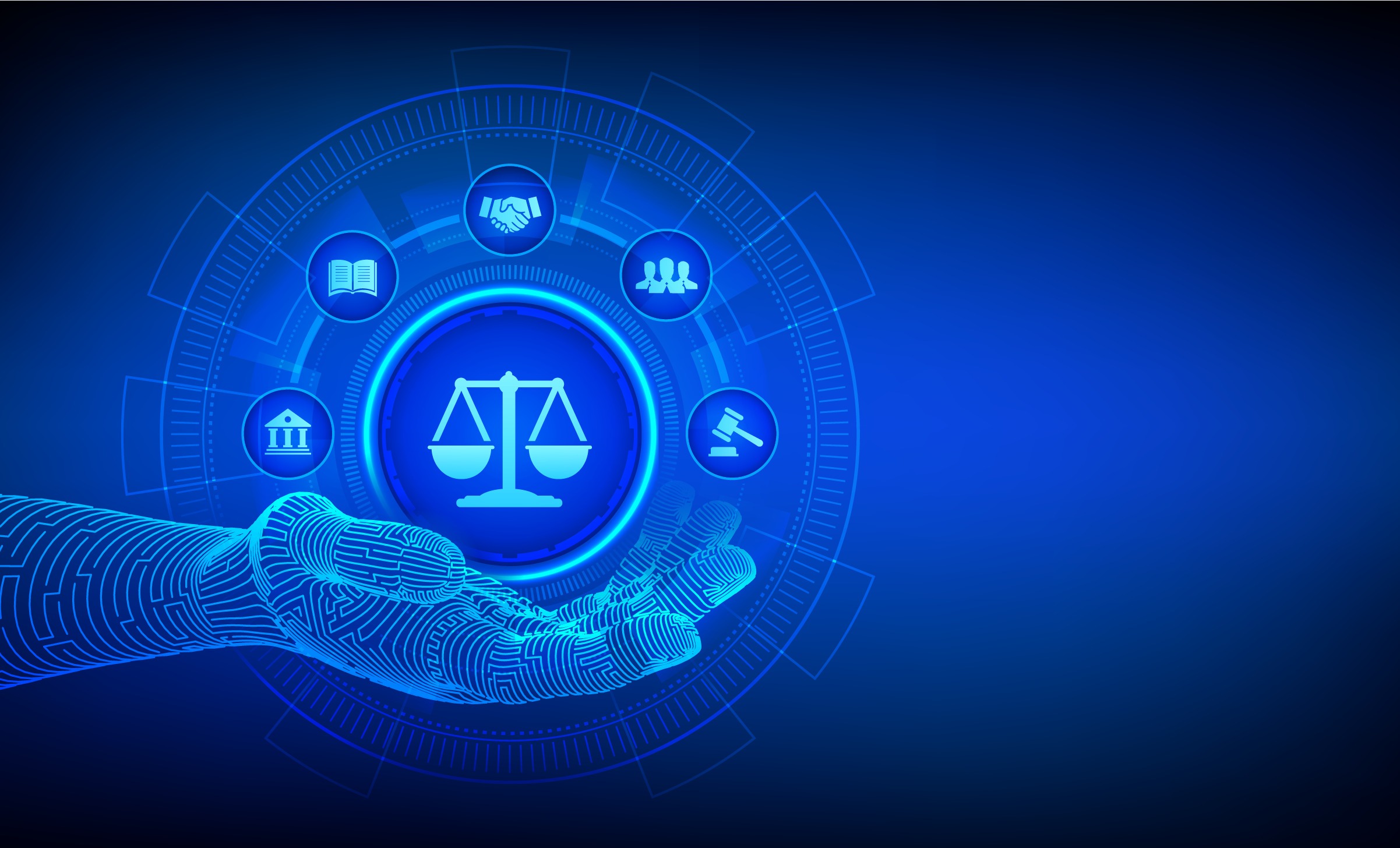1. Preliminary
On 20 February 2019, the Ministry of Electronics and Information Technology (“MeitY”)[1] published a report titled ‘India’s Trillion-Dollar Digital Opportunity’ (“Report”)[2] in collaboration with McKinsey & Company. This report was prepared in consultation with the Government of India (“Government”), various state governments and private stakeholders. The report was conceived with three primary objectives.
1.1 To identify the extent of digital adoption in India,[3]
1.2 To convey the vision, potential size and drivers of the Indian digital economy,[4] and
1.3 To chalk out a roadmap for achieving India’s digital vision.[5]
The Report notes and commends the achievements of the Digital India Programme of 2015[6] for increasing digital access, services, inclusion and empowerment and for bridging the ‘haves’ – ‘have nots’ divide.
The study underlying the genesis of the Report has also led to the creation of a Country Digital Adoption Index (“Index”)[7] evaluating 17 countries on 30 metrics spread over 3 pillars namely, Digital Foundation, Digital Reach and Digital Value.[8] India’s growth rate along the Index was 90% between 2014 and 2017, only behind Indonesia.[9]
The Report presents India’s digital vision and its potential to attain 1 trillion dollars of economic value in the digital economy by 2025, while highlighting various focus areas to achieve the same.
This blog post seeks to summarise the Report with a focus on the 30 digital themes listed in the Report which span across 9 key areas. None of the opinions or statements in this blog post are our own, they have been picked up from the Report. The language has been changed in some places to facilitate ease of reading and retention.
2. KEY FINDINGS
The Report outlines the following key findings:
2.1 India is among the top three global economies in number of digital consumers:[10] India has the second highest number of internet subscriptions in the world.[11] India has the most social media users globally.[12] Aadhaar covers more than 1.2 billion people and is the largest system of its type globally.[13]
2.2 India has the second-fastest rate of growth of digital adoption in the relevant comparison set:[14] India’s digital index score has risen the fastest after Indonesia amongst the countries surveyed.[15] India’s digital divide is narrowing fast. 7 out of the 10 Indian states with the highest growth rate of internet subscriptions in 2014-2018 had per capita GDP lower than India’s average.[16] 8 of the top 10 Indian states in terms of gram panchayats with Common Services Centres (“CSC”) have lower GDP per capita than India’s average.[17]
2.3 30 digital themes, if scaled up nationally, can accelerate India’s progress in 9 key areas:[18] Initiatives are already under way to provide some basis for future growth. The Report discusses these 30 digital themes in detail subsequently.
3. GUIDING PRINCIPLES FOR THE INDIAN GOVERNMENT:
3.1 Improve ease of operations and reduce operating costs for digital businesses:[19] India must aspire to be among the top 10 countries globally for digital businesses and start-ups.[20]
3.2 Unlock the flow of domestic capital into digital businesses:[21] India must mobilise domestic savings by rationalising tax rates and government support to digital-focused start-up funds amongst other steps.[22]
3.3 Facilitate a booming open-API ecosystem:[23] Every government digital initiative must conform to MeitY’s open- application programming interface (“API”) guidelines to allow users to leverage the underlying data for innovation.[24] Indian organisations and companies should make gov.in data public to attract global innovators to do business in India.[25]
3.4 Support Indian digital innovators through government procurement:[26] The government should create demand for the country’s best innovations. This would incentivise Indian innovators to solve national problems.[27] Open competitions with funding options as incentives will further propel innovation.[28]
3.5 Unshackle centres of higher education and innovation:[29] Higher education institutions must set up innovation clusters and tinkering labs in collaboration with industry players.[30] The Government should increase investment in existing centres of excellence to enable more chairs, scholarships and special funds, which will attract global talent.[31]
4. INDIA’S DIGITAL VISION
4.1 The Report makes the following observations about India’s digital evolution:
4.1.1 Government action and private-sector innovation are driving rapid, large-scale digital adoption:[32]
Government and private efforts have incentivised the adoption of digital identity (Aadhar) and digital infrastructure (Broadband Highway) amongst others.[33] Centres of excellence have been opened in emerging tech areas such as the internet of things, blockchain and fintech amongst others.[34] Additionally, private players have started providing India-tailored offerings enabled by falling technology costs.[35] This further drives uptake.
4.1.2 Universal open digital platforms and APIs provide a strong digital foundation:[36]
‘Aadhaar Payments Bridge’ and the ‘Aadhaar Enabled Payments System’, which leverage Aadhaar to electronically transfer benefits and subsidies to targeted beneficiaries are examples of the universal open digital platforms.[37] Further, e-Sign enables an Aadhaar-based digital signature on a document.[38] DigiLocker allows the issuance and verification of digital documents.[39]
4.1.3 Global technology trends have spurred private-sector investment and innovation to expand India’s digital consumer base:[40]
Amazon, Facebook, Google, Microsoft, and Netflix are providing tailored services to India’s consumers.[41] About 90% of India’s top chief information officers plan to or already leverage cloud services.[42] Fintech innovation has grown rapidly with one survey showing that 76% of consumers use at least one non-traditional form for financial services.[43]
4.2 The Report also focuses on India’s digital adoption vis-à-vis other countries:
4.2.1 India’s position is assessed on digital foundation, reach, and value:[44]
‘Digital foundation’ means the availability of digital infrastructure such as internet download speeds, affordability amongst others.[45] ‘Digital reach’ means the penetration and ownership of digital services and devices respectively.[46] ‘Digital value’ means the usage of various digital applications, platforms and services.[47] India has one of the highest rates of growth in several dimensions[48] but has scope for growth.[49] India, with 90% growth rate in the Index in 2014-17, had the second-fastest rate of digital adoption among the group of 17 countries assessed, just behind Indonesia at 99%.[50] However, there is significant variation across the three pillars and individual metrics.[51] On the metrics of digital reach and digital value, India has immense scope for growth.[52]
4.2..2 India can have more than 900 million internet users by 2025:[53]
As smartphones become affordable and purchasing power increases, their penetration could reach 75% by 2022, equalling about 700 million smartphones, which could rise to about 850 million plus by 2025.[54]
4.3 The Report discusses how digital ecosystems can create $1 trillion of economic value:[55]
4.3.1 India’s digital economy could rise from $200 billion currently to as much as $1 trillion by 2025:[56]
Existing digital ecosystems are likely to generate between $410 billion and $510 billion in value and new digital ecosystems could contribute between $385 billion and $505 billion.[57]
4.3.2 Digital interventions could imply the need to redeploy 40-45 million workers and create about 20 million new tech-enabled jobs:[58]
Four types of opportunities would arise for new kinds of work:[59] a) High-tech workers trained in digital technologies, b) work enabled by new digital marketplaces, c) digitally enabled remote processing centres and value chains in semi-urban and rural areas, and d) digitally enabled on-demand work for independent workers.
4.4 The Report discusses the need for supportive policies, platforms, and partnerships:[60]
4.4.1 A creative balance between regulation, compliance, and innovation:[61]
Ease of and reduction in cost of operations along with mobilising domestic capital into digital businesses is required.[62] Strategic procurement would promote Indian digital innovators.[63] Investment and upgrading would boost Indian centres of higher education and innovation.[64] An open API ecosystem needs to be promoted.[65] Supportive policies and regulations,[66] setting up new digital platforms[67] and collaborations with the central and state governments[68] will promote the digital economy.
4.4.2 The right governance architecture:[69]
Sector-specific consultative forums to promote digital transformation[70] along with public digital platforms[71] need to be promoted.[72] A digital dashboard must be created to objectively measure progress in different sectors.[73]
5. NATIONAL GOALS AND SPECIFIC DIGITAL THEMES
The Report identifies 30 themes and aspirations in 9 important areas, in addition to digital business models with the potential to be successful and scalable by 2025. These are:
5.1 GOAL A: 21ST-CENTURY IT INFRASTRUCTURE AND SOFTWARE CAPABILITIES[74]
5.1.1 Theme 1: An equipped it-bpm industry:[75] Developing a digitally skilled workforce in collaboration with industry bodies will be required.[76] Tax incentives, simplification of licensing terms and conditions for data centres[77] and cloud computing[78] and a data governance framework for the cloud[79] are proposed by the Report. The government should promote entrepreneurship by establishing innovation clusters[80], interest groups and certification programmes for emerging technologies.[81]
5.1.2 Theme 2: State-of-the-art cybersecurity and data protection:[82] Cybersecurity courses should be taught in institutes of higher learning to impart cybersecurity skills.[83] Public awareness about cybersecurity can be increased by publicising best practices.[84] Regulations and legislations should be regularly revised to tackle emerging threats.[85] India should develop a home-grown cybersecurity industry in collaboration with universities or through employer-funded programmes to tackle cybersecurity threats.[86] Each government department should prepare an annual cyber risk assessment document for tracking its performance and progress on this front.[87]
5.1.3 Theme 3: Real-time data visualisation and deep analytics:[88] This would require a clear definition of the data sets that can be shared by government departments and in what format.[89] High profile programmes should be tracked through a national dashboard.[90] The benefits of open data sharing should be highlighted by developing specific use cases.[91] This would also ensure the uptake of such open data aggregation platforms.[92] Every government digital initiative should be mandated to conform to the MeitY open -API guidelines.[93] Steps should be taken to promote an open data policy, including developing the requisite infrastructure.[94] There is also a need to train data scientists through concerted efforts.[95]
5.1.4 Theme 4: Visual broadband for everyone:[96] Public Wi-Fi hotspots should be explored.[97] Digital applications including telemedicine and learning materials for students in rural areas, amongst other interventions, can be made possible only with visual broadband.[98] All of this will require reliable high speed internet in rural areas.[99] Through the BharatNet programme, India has worked towards broadband connectivity in all villages of India.[100] The Report also fleshes out the granular fibre roll-out strategies for the urban[101] and rural[102]
5.2 GOAL B: E-GOVERNANCE OF THE FUTURE
5.2.1 Theme 5: Government e-Marketplace:[103] The Government e-Marketplace (“GeM”) set-up by the government in 2016 would benefit from standardised and technical evaluation of bids, resulting in enhanced automations and transparency in the bidding process.[104] Data analytics and a comprehensive audit trail will reduce fraud, waste, and abuse.[105] A catalogue-management system to eliminate ambiguity in specifications of goods and services and a consumer rating system will increase uptake.[106] The GeM could collaborate with India’s e-commerce platforms to learn best practices.[107] The GeM’s user base can be expanded by mandating all state governments and union territories and their departments, agencies etc. to purchase from the GeM.[108]
5.2.2 Theme 6: Digital Land 2.0 for digitising land transfer, leasing, and tracking:[109] The government needs to update and complete the foundational Digital India Land Records Modernisation Programme, 2008 which is the single window system for all land process related services.[110] The government could incentivise the digitisation of land-registration.[111] A merger of registration and revenue databases could prevent duplication of efforts which would otherwise result from having to update each database separately.[112] This would also allow linkages to banks, insurance companies, and others institutions.[113] The government could use mobile apps and web portals to enable people to access their digital land records.[114] A nodal body should establish technical benchmarks and standards for improving records’ identification and linkage.[115] Further, the government should encourage title insurance riding on the back of digitised land records.[116]
5.2.3 Theme 7: National document and data exchange:[117] A national document exchange would facilitate simplification of document-issuing and exchange.[118] This would facilitate the exchange of data between agencies while maintaining security and upholding consent requirements.[119] In this direction, DigiLocker is planning to create an API based data exchange framework that would function across government organisations.[120] MeitY should publicise the legal validity and security of digital documents.[121] Acceptance of digital documents may be made mandatory across government departments and agencies.[122] Simultaneously, more government departments should be encouraged and incentivised to provide documents, such as PAN card, voting card, and birth and death certificates through DigiLocker.[123]
5.2.4 Theme 8: Improved urban e-governance using digital interventions:[124] Central and state governments can incentivise the grass-root level adoption of digital applications by building adequate capacity at the local government level.[125] Best practices’ sharing with respect to e-governance should be encouraged by convening regular sessions of senior administrators.[126] A set of shareable APIs and digital tools should be published for local bodies to appropriately modify and use.[127] Shared fibre infrastructure would avoid duplication of resources.[128] Provision of digital infrastructure as part of existing projects, would eliminate repeated costs and productivity losses due to permits, digging, and labour.[129]
5.2.5 Theme 9: Comprehensive Direct Benefit Transfers:[130] Subsidy and benefits payments,[131] payments to service providers such as anganwadi workers[132] and in-kind benefits[133] could be moved to Aadhaar enabled direct benefit transfer (“DBT”).[134] Banking correspondents, post offices, and CSCs could assist citizens in accessing the banking infrastructure to scale up the DBT model.[135] State level grievance-redressal mechanisms could be established to address problems with DBT.[136]
5.2.6 Theme 10: A profitable Common Services Centre in every gram panchayat:[137] CSCs should expand the range and volume of goods and services delivered by [138] Developing better business models for village level entrepreneurs (“VLEs”) can expand their businesses.[139] Some examples are making last-mile deliveries of e-commerce purchases,[140] acting as sales agents for local Micro Small and Medium Enterprises (“MSME”),[141] and selling e-insurance[142] amongst others. Rules and regulations that impede the provision of certain services should be addressed to unlock potential.[143] Special impetus should be given to Wi-Fi Choupal service which makes Wi-Fi available in all villages via CSCs linked to BharatNet.[144]
5.3 GOAL C: HEALTHCARE FOR ALL
5.3.1 Theme 11: A universal electronic health record for every Indian:[145] Comprehensive electronic health records (“EHR”) could help improve healthcare services and assist in public health policy formulation.[146] EHRs would have to be backed by templates for data collection along with rules for data sharing, aggregation and usage.[147] The Ministry of Health and Family Welfare (“MoHFW”) has already approved metadata and data standards developed by the MeitY.[148] MoHFW has also released a draft Digital Information Security in Healthcare Act. 2018 (“DISHA”) addressing privacy, security, storage and exchange concerns around electronic health data.[149] In this direction, the MoHFW is exploring an interoperable EHR platform called the Integrated Health Information Portal (“IHIP”) to increase consumer convenience.[150]
5.3.2 Theme 12: Tech-enabled health delivery system at the primary, secondary, and tertiary level:[151] The adoption of remote healthcare services requires a supportive regulatory framework.[152] Public-private partnerships are needed to train healthcare workers and provide infrastructure facilities.[153] Laws need to address the legal validity of teleconsultations and online prescriptions, as well as the question of legal jurisdictions in case of inter-state consultation.[154] Privacy and security standards must be set for storing and transmitting health records.[155] The DISHA has listed powers and functions to the National Electronic Health Authority of India.[156] This authority will work towards standardisation testing and quality certification of the digital healthcare system.[157] E-learning platforms would be helpful in training healthcare workers in remote areas.[158]
5.3.3 Theme 13: A universal health insurance platform:[159] A digital health insurance platform will act as a backbone for rolling out the National Health Protection Scheme.[160] It would take insurers into confidence, reduce false claims, efficiently process claims and settlements[161] and help accurately determine premiums[162]. Pooling of national health data would lead to better health system planning and forecasting, more effective drug research, more targeted insurance pricing, and more effective public response systems for emergencies and outbreaks.[163]
5.4 GOAL D: QUALITY EDUCATION FOR ALL
5.4.1 Theme 14: Integrated digital education platform for students, with local-language content:[164] Education technology (“edtech”) can offer tailored content for individual students to improve learning outcomes.[165] A one-stop digital education platform should be created which would increase uptake, enable students to log in and track their learning activities and outcomes and increase output.[166] This platform could be integrated with data from different agencies such as the National Achievement Survey, the All India Senior School Certificate Examination, and state boards which could provide a holistic picture of student performance.[167] Moreover, the platform could provide the digital infrastructure for content creators and solution developers.[168] A Government-led fund of funds and hackathons would support edtech innovation and promote further investment in this field.[169]
5.4.2 Theme 15: Digital content delivery and learning in schools and higher education institutions:[170] Teachers could immensely benefit from online lessons, videos, and simulations to improve conceptual understanding.[171] Continuous assessment tools and adaptive learning systems could help teachers create personalised learning plans for students.[172] High-speed internet connectivity,[173] internet connected devices or shared computers[174] are pre-requisites for achieving this goal. Digital content in local-languages would improve learning outcomes immensely[175]. All of this would entail digital literacy for teachers and students.[176] A regulatory framework would also have to be devised to recognise distance learning.[177] Digital learning in deprived and troubled areas would improve social outcomes.[178]
5.5 GOAL E: POWER FOR ALL
5.5.1 Theme 16: Digitally enabled power access:[179] Digitising the power distribution network and operations would reduce technical and commercial losses.[180] Digital meters and smart meters connected to the internet would allow private players to leverage the ‘build-own-operate-maintain’ model and reduce the burden on distribution companies (“DISCOM”).[181] State governments could explore electronic DBT to households below the poverty line and to farmers[182] leading to better targeting of power subsidies.[183] Certain other proposals by the Report are electronic Know-Your-Customer (“eKYC”) by DISCOMs,[184] indexing of consumers to eliminate revenue leakages[185] and encouragement of digital payments.[186]
5.5.2 Theme 17: Smart grids for integrating distributed generation and renewables:[187] Smart grids would allow bi-directional flow of power and reduce the burden on DISCOMs.[188] Also, the Government could undertake demand-side management (financial incentives to use less power)[189] or demand-response programmes (time-based rates or other financial incentives to encourage consumers to reduce electricity usage during peak demand periods).[190] DISCOMs could collaborate with original equipment manufacturers, academia etc. and others to conduct research and establish proofs of concept for smart grid technologies.[191]
5.6 GOAL F: NEXT GENERATION FINANCIAL SERVICES
5.6.1 Theme 18: Digital payments solutions and transition to a less-cash economy:[192] Customers and merchants should be educated about the benefits of digital payments and be assured of the security and reliability of digital transactions.[193] Ministries, departments, societies and agencies should be equipped to accept digital payments.[194] QR codes could also be issued to them to facilitate uptake.[195] Incentives (for example, cheaper finance) for traders, farmers, and microenterprises would encourage uptake of online payments.[196] Other proposals include expanding the Bharat Bill Payment Scheme through a network of offline and online agents.[197]
5.6.2 Theme 19: Flow-based lending and advanced credit underwriting:[198] Banks should be allowed to access applicants’ conventional data (tax returns, bank statements, and credit history) which would facilitate the digitising of loans.[199] Further, with user consent, banks may also tap unconventional data sources, such as the GSTN, mobile phone accounts to assess the applicant’s creditworthiness.[200] This may cumulatively lead to lower interest rates for some borrowers due to data-backed risk pricing.[201] The Ministry of Corporate Affairs (“MCA”) could mandate usage of machine-readable formats by companies to promote consistent, uniform, machine-readable digital data.[202] Policies formulated by the Ministry of Finance and Ministry of Micro, Small and Medium Enterprises could encourage Udyog Aadhaar–based eKYC, anti-money-laundering database and consent architecture for businesses.[203]
5.7 GOAL G: DOUBLING FARMERS’ INCOMES
5.7.1 Theme 20: Digital farmer financing and insurance payout:[204] Digitised and digital identity seeded land records, photographic images of standing crops, evidence of digital payments to agri-input companies and others will enable accurate credit risk assessment using algorithms.[205] When coupled with electronic bank accounts, this can be used to achieve faster insurance payouts.[206] State revenue departments must make digitised land records seamlessly available to lending institutions and encourage farmers to move all of their payments and receipts to digital channels.[207] Collating all information regarding a farmer’s credit and cash flow data under a verifiable identity would make credit easily available.[208] Further, the NITI Aayog is also drafting a Model Agricultural Land Leasing Act to help lessee cultivators gain access to credit.[209]
5.7.2 Theme 21: Precision agriculture know-how for every farmer:[210] Precision agriculture is the practice of using detailed, real-time data from a variety of sources to minimise inputs and maximise outputs.[211] The Ministry of Agriculture and Farmers Welfare has dispatched over 158.7 million Soil Health Cards, capturing details of the individual soil type, along with input advice.[212] Awareness about this advancement needs to be increased through demonstration programmes.[213] Multiple data portals covering different aspects of the agricultural value chain need to be aggregated in the single integrated agriculture platform.[214] Additionally, promoting equipment sharing platforms will make farm equipment more affordable.[215]
5.7.3 Theme 22: Universal online agricultural marketplaces to connect farmers to the market:[216] Scaling up the Electronic National Agricultural Market (“eNAM”) and the ‘mKisan Buyer-Seller Platform’ would put farmers and traders in direct contact, thereby delivering timely information about local prices, supply and counterparty records.[217] Further, an e-warehousing and logistics interface would open farmers’ market options from trading within a single mandi to intermandi trading within a state, and ultimately to interstate trading.[218] Introducing the required regulatory changes, improving mandis’ capabilities in grading crops, verifying trades, and resolving disputes would increase the adoption of eNAM.[219] Public-private partnerships could also be explored to improve the aforesaid online [220] Certain other proposals are the inclusion of animal husbandry products in eNAM, placing agriculture on the concurrent list and utilisation of the buyer-seller model where the eNAM is not yet in place.[221]
5.8 GOAL H: MAKE IN DIGITAL IDIA, MAKE FOR INDIA, MALE FOR THE WORLD
5.8.1 Theme 23: End to end digital supply chain, e-enabled trade, and e-commerce:[222] A digital supply chain would lower inventory carrying cost[223] and enable flow-based lending for vendors.[224] Predictive analytics for manufacturers and e-commerce companies, will better match demand and supply.[225] The Ministry of Finance, the public/private-sector banks, and application service providers could create a platform to aggregate GSTN data for analytics.[226] Installing point-of-sale digital terminals could help accurately track tertiary sales in the fast moving consumer goods (“FMCG”) industry.[227]
5.8.2 Theme 24: Efficient transportation enabled by shared platforms:[228] Shared transport splits expenses, reduces road congestion and pollution.[229] Clear guidelines for ride-sharing platforms will encourage this mode of travel.[230] Private vehicles should be allowed to be registered on ride-sharing platforms.[231] The relaxation of licensing requirements for taxi and auto drivers will help India address its driver shortage.[232]
5.8.3 Theme 25: Integrated logistics platform:[233] Warehouses could use autonomous vehicles to increase their rate of picking or selecting the correct item in a warehouse.[234] “Smart shelving” technology can be used to track real-time inventory using the internet of things (“IoT”).[235] The Government could implement a modern port-community system that will help standardise and streamline logistics data and reduce duplication in paperwork.[236] The workforce also needs to be adequately equipped to cope with these changes.[237] The universal acceptability of RFID tags would further smoothen this process.[238]
5.8.4 Theme 26: Manufacturing automation and IoT-based technologies:[239] A public-private partnership should promote venture funds to support IoT-related companies.[240] Incubation centres would help in the development of IoT and AI.[241] The convergence of IoT with advanced analytics can help to maximise the yield and throughput of plants while minimising energy consumption.[242] This would also improve product quality.[243] IoT devices should to be made interoperable, and concerns regarding cybersecurity should be adequately addressed.[244]
5.8.5 Theme 27: Electronic device manufacturing ecosystems:[245] Domestic electronics manufacturing would increase employment and provide affordable electronics to the country, which are critical for digital applications.[246] A Phased Manufacturing Programme (“PMP”), under which import duty is imposed on certain electronic components could be rolled out.[247] This would encourage local production and may promote exports from India as well.[248] Manufacturing of medical, consumer and automotive electronics needs to be given impetus.[249] Targeted policy interventions along with tax and duty incentives should be offered to IoT-related players.[250] Industrial corridors and new clusters could ensure quality infrastructure to manufacturing players.[251] Incubation centres would encourage start-ups in emerging technologies such as 5G, IoT, artificial intelligence and others.[252]
5.9 GOAL I: JOBS AND SKILLS FOR THE FUTURE
5.9.1 Theme 28: Skill building for the future:[253] There should be single window approval system for online training platforms and certifications.[254] A regulator of skills should facilitate this.[255] The open distance learning policy needs to be updated accordingly.[256] Educational institutions, training providers, Government agencies, and industry bodies and sector skill councils need to design future-oriented content to potential job seekers.[257] Massive open online courses (“MOOCs”) need to be promoted.[258] The use of augmented reality and virtual reality tools should be explored to train skill seekers in using high‑end machines.[259]
5.9.2 Theme 29: Online talent marketplaces to connect employers with work seekers:[260] A countrywide online employment aggregation platform would better connect employers with work seekers.[261] A Government platform could be established which aggregates data by sector and geography, which could then be used by private platforms.[262] The Government’s planned Labour Market Information System combined with the National Career Service can be the said platform.[263] Independently trained candidates’ data could also be updated on this portal.[264] Common Services Centres in rural areas and e-Mitra kiosks could serve as decentralised local employment exchanges.[265]
5.9.3 Theme 30: Digitally enabled jobs:[266] Trained women professionals could benefit immensely from this model.[267] Credibility could be boosted by Government-backed quality certifications and data privacy solutions.[268] State governments could employ semi-urban and rural BPOs for at least 12 months after they are established for non-sensitive and routine work.[269] The Ministry of Labour and Employment could provide freelancers with legal recognition.[270] This would allow convenient access to financial and insurance services by addressing creditworthiness concerns.[271] Freelancing portals could perform background checks of employers to improve security.[272] Sharing written contracts and job certificates with the freelancers should be made mandatory.[273]
(Authored by Ratul Roshan, Associate, with inputs from Tuhina Joshi, Associate and Nehaa Chaudhari, Public Policy Lead at Ikigai Law)
[1] The Ministry of Electronics, Information and Technology, Government of India, has the mission of promoting e-governance for empowering citizens, promoting inclusive and sustainable growth of the electronics, information technology and information technology enabled services industries, and enhancing India’s role in internet governance, amongst other things. Its website can be accessed at https://meity.gov.in/home.
[2] MeitY, India’s Trillion-Dollar Digital Opportunity, dated 20 February 2019, available at https://meity.gov.in/content/india%E2%80%99s-trillion-dollar-digital-opportunity.
[3] Page 5, the Report.
[4] Page 5, the Report.
[5] Page 5, the Report.
[6] The Digital India Programme was approved by the Cabinet on 20 August 2014. This programme was envisaged by the (erstwhile) Department of Electronics and Information Technology. Its website is available at https://www.digitalindia.gov.in/.
[7] Page 5, Report.
[8] Page 15, Report.
[9] Page 6, Report.
[10] Page 5, Report.
[11] Page 5, Report.
[12] Page 6, Report.
[13] Page 6, Report.
[14] Page 6, Report.
[15] Page 6, Report.
[16] Page 6, Report.
[17] Page 6, Report.
[18] Page 6, Report.
[19] Page 9, Report.
[20] Page 9, Report.
[21] Page 9, Report.
[22] Page 9, Report.
[23] Page 9, Report.
[24] Page 10, Report.
[25] Page 10, Report.
[26] Page 10, Report.
[27] Page 10, Report.
[28] Page 10, Report.
[29] Page 10, Report.
[30] Page 10, Report.
[31] Page 10, Report.
[32] Page 38, Report.
[33] Page 38, Report.
[34] Page 41, Report.
[35] Page 37, Report.
[36] Page 43, Report.
[37] Page 43, Report.
[38] Page 43, Report.
[39] Page 49, Report.
[40] Page 49, Report.
[41] Page 49, Report.
[42] Page 51, Report.
[43] Page 51, Report.
[44] Page 57, Report.
[45] Page 59, Report.
[46] Page 59, Report.
[47] Page 59, Report.
[48] Page 59, Report.
[49] Page 59, Report.
[50] Page 62, Report.
[51] Page 60, Report.
[52] Page 60, Report.
[53] Page 65, Report.
[54] Page 65, Report.
[55] Page 103, Report.
[56] Page 103, Report.
[57] Page 108, Report.
[58] Page 112, Report.
[59] Page 112, Report.
[60] Page 117, Report.
[61] Page 117, Report.
[62] Page 117, Report.
[63] Page 119, Report.
[64] Page 119, Report.
[65] Page 120, Report.
[66] Page 121, Report.
[67] Page 121, Report.
[68] Page 120, Report.
[69] Page 124, Report.
[70] Page 124, Report.
[71] Page 124, Report.
[72] Page 124, Report.
[73] Page 124, Report.
[74] Page 127, Report.
[75] Page 127, Report.
[76] Page 130, Report.
[77] Page 130, Report.
[78] Page 130, Report.
[79] Page 130, Report.
[80] Page 132, Report.
[81] Page 132, Report.
[82] Page 133, Report.
[83] Page 136, Report.
[84] Page 136, Report.
[85] Page 136, Report.
[86] Page 137, Report.
[87] Page 137, Report.
[88] Page 138, Report.
[89] Page 141, Report.
[90] Page 78, Report.
[91] Page 141, Report.
[92] Page 142, Report.
[93] Page 78, Report.
[94] Page 142, Report.
[95] Page 142, Report.
[96] Page 143, Report.
[97] Page 144, Report.
[98] Page 145, Report.
[99] Page 144, Report.
[100] Page 146, Report.
[101] Page 149, Report.
[102] Page 149, Report.
[103] Page 153, Report.
[104] Page 155, Report.
[105] Page 80, Report.
[106] Page 155, Report.
[107] Page 80, Report.
[108] Page 155, Report.
[109] Page 156, Report.
[110] Page 156, Report.
[111]Page 159, Report.
[112] Page 159, Report.
[113] Page 157, Report.
[114] Page 157, Report.
[115] Page 160, Report.
[116] Page 161, Report.
[117] Page 162, Report.
[118] Page 162, Report.
[119] Page 162, Report.
[120] Page 163, Report.
[121] Page 165, Report.
[122] Page 165, Report.
[123] Page 165, Report.
[124] Page 166, Report.
[125] Page 169, Report.
[126] Page 169, Report.
[127] Page 169, Report.
[128] Page 169, Report.
[129] Page 169, Report.
[130] Page 170, Report.
[131] Page 173, Report.
[132] Page 83, Report.
[133] Page 171, Report.
[134] Page 171, Report.
[135] Page 173, Report.
[136] Page 83, Report.
[137] Page 174, Report.
[138] Page 83, Report.
[139] Page 174, Report.
[140] Page 174, Report.
[141] Page 83, Report.
[142] Page 83, Report.
[143] Page 176, Report.
[144] Page 176, Report.
[145] Page 180, Report.
[146] Page 181, Report.
[147] Page 84, Report.
[148] Page 181, Report.
[149] Page 183, Report.
[150] Page 85, Report.
[151] Page 184, Report.
[152] Page 187, Report.
[153] Page 85, Report.
[154] Page 187, Report.
[155] Page 187, Report.
[156] Page 187, Report.
[157] Page 187, Report.
[158] Page 188, Report.
[159] Page 189, Report.
[160] Page 191, Report.
[161] Page 189, Report.
[162] Page 189, Report.
[163] Page 86, Report.
[164] Page 195, Report.
[165] Page 87, Report.
[166] Page 196, Report.
[167] Page 87, Report.
[168] Page 196, Report.
[169] Page 199, Report.
[170] Page 200, Report.
[171] Page 200, Report.
[172] Page 87, Report.
[173] Page 201, Report.
[174] Page 200, Report.
[175] Page 200, Report.
[176] Page 204, Report.
[177] Page 204, Report.
[178] Page 205, Report.
[179] Page 207, Report.
[180] Page 207, Report.
[181] Page 210, Report.
[182] Page 207, Report.
[183] Page 207, Report.
[184] Page 210, Report.
[185] Page 210, Report.
[186] Page 210, Report.
[187] Page 211, Report.
[188] Page 211, Report.
[189] Page 211, Report.
[190] Page 88, Report.
[191] Page 89, Report.
[192] Page 217, Report.
[193] Page 220, Report.
[194] Page 89, Report.
[195] Page 219, Report.
[196] Page 89, Report.
[197] Page 220, Report.
[198] Page 221, Report.
[199] Page 221, Report.
[200] Page 223, Report.
[201] Page 221, Report.
[202] Page 223, Report.
[203] Page 223, Report.
[204]Page 228, Report.
[205] Page 229, Report.
[206] Page 232, Report.
[207] Page 231, Report.
[208] Page 231, Report.
[209] Page 232, Report.
[210] Page 233, Report.
[211] Page 233, Report
[212] Page 236, Report
[213] Page 236, Report
[214] Page 236, Report
[215] Page 237, Report
[216] Page 238, Report
[217] Page 240, Report
[218] Page 240, Report.
[219] Page 92, Report.
[220] Page 242, Report.
[221] Page 240, Report.
[222] Page 245, Report.
[223] Page 92, Report.
[224] Page 247, Report.
[225] Page 93, Report.
[226] Page 247, Report.
[227] Page 247, Report.
[228] Page 248, Report.
[229] Page 250, Report.
[230] Page 250, Report.
[231] Page 250, Report.
[232] Page 250, Report.
[233] Page 251, Report.
[234] Page 245, Report.
[235] Page 255, Report.
[236] Page 254, Report.
[237] Page 252, Report.
[238] Page 254, Report.
[239] Page 256, Report.
[240] Page 260, Report.
[241] Page 262, Report.
[242] Page 257, Report.
[243] Page 257, Report.
[244] Page 260, Report.
[245] Page 261, Report.
[246] Page 261, Report.
[247] Page 262, Report.
[248] Page 262, Report.
[249] Page 264, Report.
[250] Page 264, Report.
[251] Page 262, Report.
[252] Page 262, Report.
[253] Page 267, Report
[254] Page 268, Report.
[255] Page 268, Report.
[256] Page 271, Report
[257] Page 271, Report.
[258] Page 271, Report.
[259] Page 268, Report.
[260] Page 272, Report.
[261] Page 276, Report.
[262] Page 275, Report.
[263] Page 275, Report.
[264] Page 275, Report.
[265] Page 273, Report.
[266] Page 277, Report.
[267] Page 279, Report.
[268] Page 279, Report.
[269] Page 279, Report.
[270] Page 279, Report.
[271] Page 279, Report.
[272] Page 279, Report.
[273] Page 279, Report.










